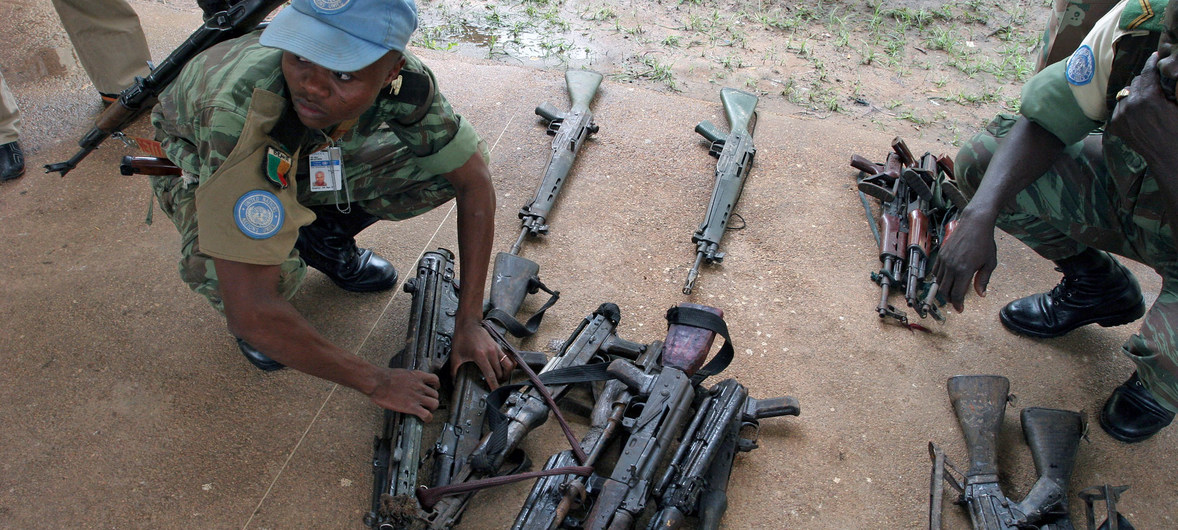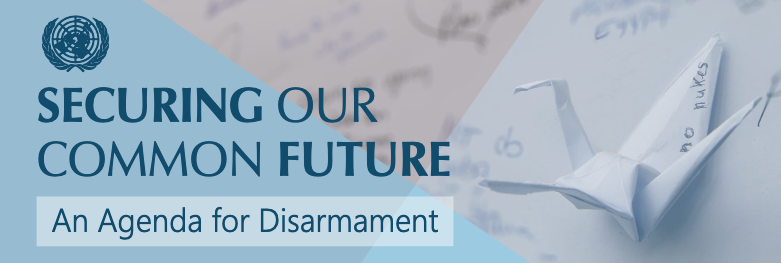UNODA Short Course Small Arms and Light Weapons
Overview
“On average, every 15 minutes, the use of a firearm results in a violent death somewhere around the world. The widespread availability of small arms and light weapons and their ammunition is a key enabler of armed violence and conflict. High levels of arms and ammunition in circulation contribute to insecurity, cause harm to civilians, facilitate human rights violations and impede humanitarian access.” (UN Secretary-General’s ‘Agenda for Disarmament: Securing our Common Future’ (2018)).
Although there is not a single encompassing definition, small arms and firearms are generally considered as weapons that are designed for individual use, while light weapons are designed for use by a group of two to three people, serving as a crew. All of them share the common characteristic that they are relatively cheap and light as well as easy to handle, transport and conceal. Today, it is estimated that more than 1 billion small arms are in global circulation, with around 700,000 to 900,000 being newly produced each year. While small arms and light weapons and the related ammunition do not necessarily create conflict per se, it is this excessive accumulation that often leads to longer lasting and more lethal violence, the impediment of post-conflict rehabilitation and the slowing down of economic growth. In addition, the trade and brokering has become more diverse over time due to a multiplication of outlets, the fragmentation of commercial markets for small arms as well as the Internet and the Dark Web, posing growing threats to the illicit trade in small arms and light weapons and to the diversion to private entities – including terrorist and criminal groups.
This short course examines how the United Nations has addressed and continues to address issues related to small arms and light weapons – in particular via its three key bodies in this field: the General Assembly, the Security Council, and the Human Rights Council. The course also presents core international documents that were created over the last two decades in the fight against the illicit manufacture and transfer of, and trade in, small arms and light weapons such as the UN Programme of Action on small arms and light weapons, the Firearms Protocol and the Arms Trade Treaty. It equally outlines how regional organisations such as the Organization for Security and Co-operation in Europe, and non-governmental organisations contribute to the efforts in tackling the problem of surplus small arms and light weapons, as well as the negative consequences of the illicit arms trade and widespread violence linked to them.

Objectives
This course examines the destructive use of explosive weapons in populated areas and the international efforts that have been created in order to respond to this humanitarian issue. It discusses the effects of armed conflict on non-combatants in urban settings, as well as the challenges caused by this problem.
Upon completion of this course, you will be able to:
- Justify the significance of disarmament and non-proliferation
- Describe the role the United Nations, the UN Office for Disarmament Affairs (UNODA), the Organization for Security and Co-operation in Europe (OSCE), non-governmental organisations and other civil society actors play in addressing disarmament issues in general and in tackling the small arms and light weapons problem in particular
- Understand the difference between a small arm and a light weapon
- Explain the importance to control the manufacturing of, and trade in, small arms and light weapons; and
- Analyse the various international instruments and frameworks that tackle the small arms and light weapons problem, including the UN Programme of Action, the Firearms Protocol, the Arms Trade Treaty and the OSCE Document on Small Arms and Light Weapons among others
|
| Audience: The course is open to all interested audiences. |
|
| Components and Methodology: Each module takes approximately 20 minutes and can be completed at the learner’s own pace The course consists of four thematic modules:
The course is available in English and is held in the Disarmament Education Dashboard, thus participants need a computer or mobile device, with audio and reliable internet connection. No special software is required. |
|
| Certificate: Upon successful completion of thematic modules, including examination and course evaluation a certificate of completion will automatically be issued to the participant. |
Short-course Series
The UN Office for Disarmament Affairs Short Course Series aims at making available quality education material on disarmament, arms control, non-proliferation and issues cross-cutting with security, such as gender and development. The courses are targeted for and available to the general public at UNODA’S globally accessible e-Learning platform disarmamenteducation.org.
In line with the UN Secretary-General’s Agenda for Disarmament this short-course series aims to contribute to the implementation of the Sustainable Development Goals.


